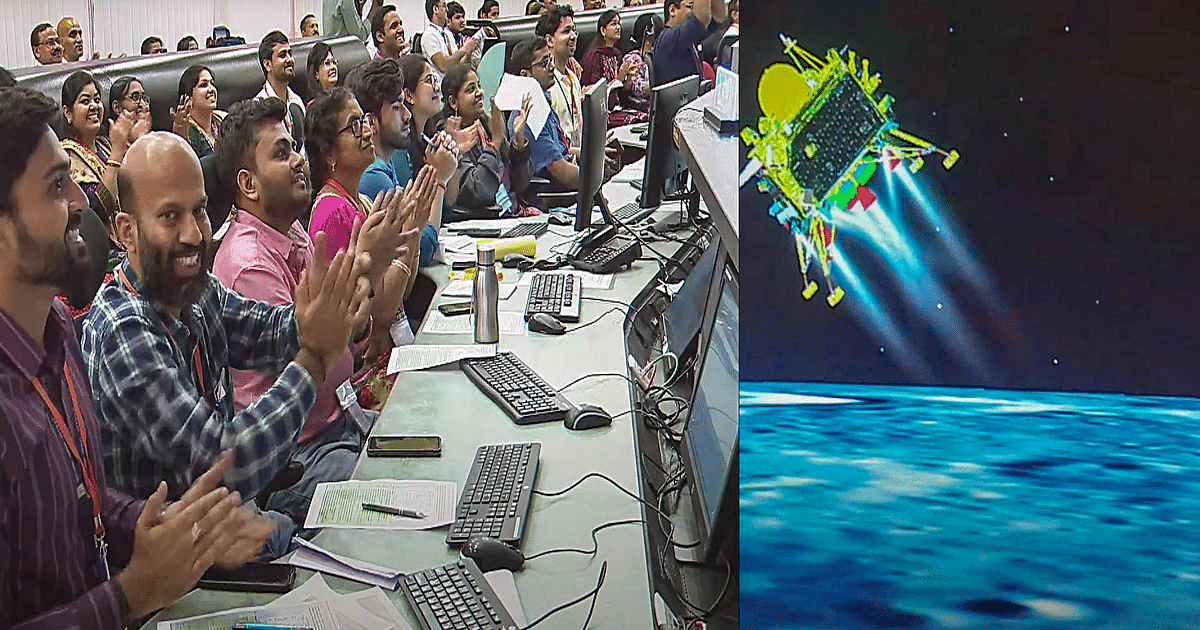Chandrayaan-3: ISRO’s Chandrayaan-3 successfully landed on the South Pole of the Moon on August 23 at 6.04 pm. Due to which the country is going to land in this region of the moon. world’s first And has become the fourth country in the world to make a successful ‘soft landing’ on the lunar surface. On July 14, there is an atmosphere of celebration in the whole country due to the successful ‘soft landing’ of Chandrayaan-3, which left for the 41-day lunar journey and India’s mastery of this technology. Today we will introduce you to the team behind this successful mission and know their educational qualifications.
S Somnath
S Somanath, Secretary, Department of Space and Chairman, Space Commission, completed his B.Tech in Mechanical Engineering from TKM College of Engineering, Kollam and Master’s degree in Aerospace Engineering from Indian Institute of Science, Bangalore. He specialized in Structure, Mobility and Control with a Gold Medal.
M Sankaran
M Sankaran, who is the director of the UR Rao Satellite Center (URSC), obtained his master’s degree in physics from Bharathidasan University, Tiruchirappalli in 1986. Thereafter, he joined ISRO Satellite Center (ISAC), now known as URSC.
Dr V Narayanan
Dr V Narayanan is the director of the Liquid Propulsion Systems Center (LPSC). He is a rocket propulsion expert who joined ISRO in 1984. Dr V Narayanan is an alumnus of IIT Kharagpur and has done MTech in Cryogenic Engineering in 1989 with first rank. He has also done PhD in Aerospace Engineering and is a silver medalist. First Rank in MTech from IIT Kharagpur and Gold Medal from Astronautical Society of India. He has also been awarded the honorary degree of Doctor of Science (Honoris Causa) from Sathyabama University, Chennai.
Dr S Unnikrishnan Nair
Dr. S. Unnikrishnan Nair is the Director of the Vikram Sarabhai Space Center (VSSC) and the Indian Institute of Space Science and Technology (IIST) Thiruvananthapuram. Dr. S. Unnikrishnan Nair has done B.Tech in Mechanical Engineering from University of Kerala, ME in Aerospace Engineering from IISc Bangalore and PhD in Mechanical Engineering from IIT Madras. He has also done MA in Telecom and Space Law from NALSAR.
P Veeramuthuvel
P Veeramuthuvel is the Project Director of Chandrayaan 3. P Veeramuthuvel did his schooling from the Railway School in Villupuram and completed his Diploma in Mechanical Engineering from a private polytechnic college. P Veeramuthuvel completed his graduation from a private college in Chennai and post graduation from another engineering college. He has done PhD from IIT Madras.
Kalpana Kalahasti
Kalpana Kalahasti, who was the Deputy Project Director for the Chandrayaan-3 mission, was born in Bengaluru, Karnataka and graduated from IIT-Kharagpur with a degree in aeronautical engineering. He has done B.Tech in Electronics & Communication from University of Madras. studied.
Chandrayaan-3 Latest Update: Latest update related to
Aditya-L1 mission will be launched on September 2 at 11:50 am
Regarding the PSLV-C57/Aditya-L1 mission, ISRO informed that the launch of Aditya-L1, the first space-based Indian observatory to study the Sun, is scheduled on September 2 at 11:50 am from Sriharikota.
The temperature was recorded at 70 degree centigrade
The Indian Space Research Organization (ISRO) on Sunday released a graph of temperature variation on the lunar surface and a senior scientist of the space agency expressed surprise over the highest temperature ever recorded on the moon. According to ISRO, the ‘Lunar Surface Thermo Physical Experiment’ (CHEST) measured the ‘temperature profile’ of the lunar mantle around the south pole, to understand the thermal behavior of the lunar surface. ISRO scientist B.K. H. M. Darukesha said, we all believed that the temperature on the surface could be around 20 degree centigrade to 30 degree centigrade, but it is 70 degree centigrade. It surprisingly exceeded our expectation.
release detailed overview
ISRO said in a post on ‘X’ (formerly Twitter) that here are the first observations of the chest payload on Vikram Lander. To understand the thermal behavior of the lunar surface, CHEST measured the temperature profile of the lunar mantle around the poles. The space agency said that the payload has a temperature measuring instrument capable of reaching a depth of 10 cm below the surface. ISRO said in a statement, it has 10 temperature sensors. The presented graph shows the lunar surface/near-surface temperature variation at different depths. These are the first such records for the Moon’s south pole. Detailed review continues.

